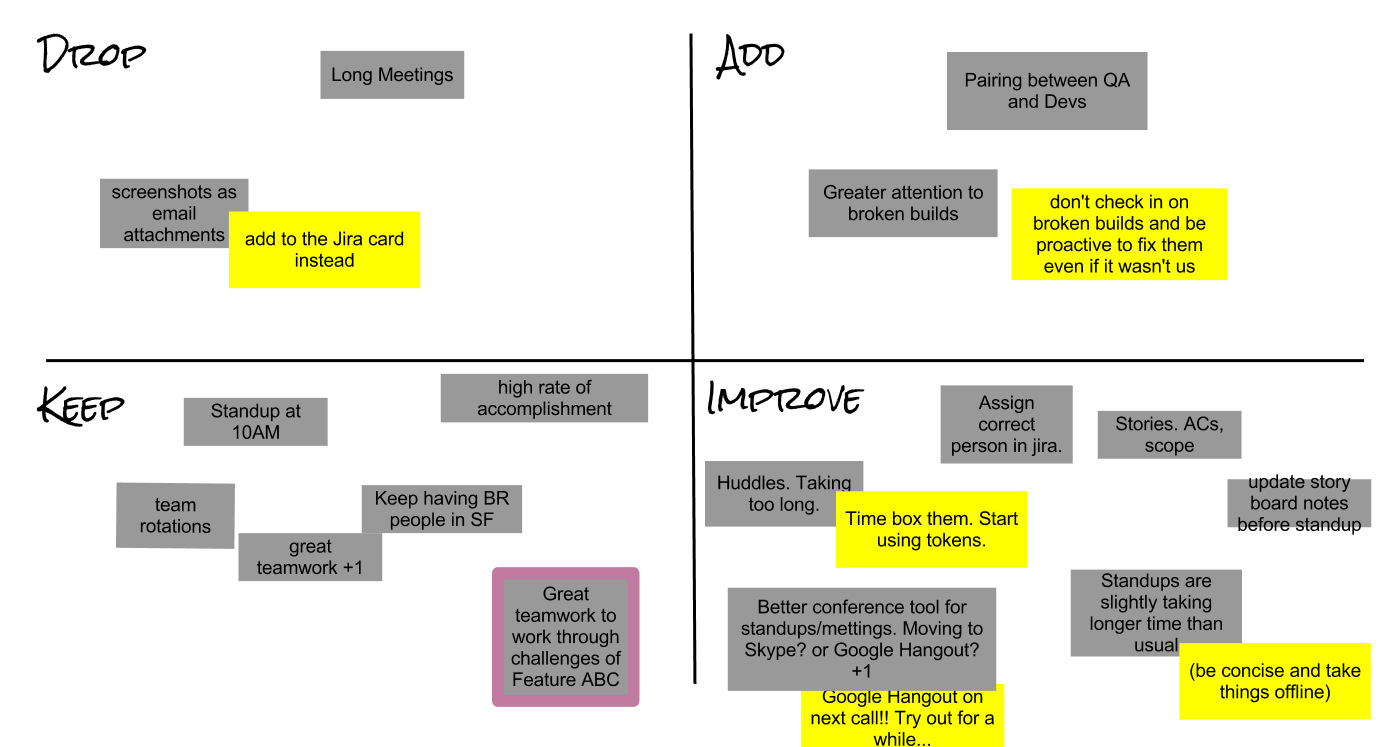The most common way of running a retrospective is through asking these three questions.
- What went well
- What did not go well
- What are the next steps/improvements?
The team after the end of each sprint in an AgileScrummodel model sits together to discuss these three questions so they can improve from next sprint on those things that need betterment.
However, there are other creative ways in which retrospectives can be run by the scrum masters or the project managers. Let’s see those in this article.
The 4L’s technique: Liked, Learned, Lacked, Longed technique.

In this technique, the team is asked to write about these four areas. What they liked, what they learned and what they lacked and finally what they longed to improve. This is done either by splitting the canvas into four parts or using the post-it notes.
Mad, Glad, Sad:

This is a technique that allows the team to identify the things that they did not like at all, and the one they liked and the ones they are unhappy about. The Mad and Sad just vary in terms of their impact. When Mad means that the team is really wanting to get rid off and Sad is that they are unhappy.
Token of appreciation


This is a technique where the team gets an opportunity to recognize each other by passing chocolate to a team member they want to appreciate. The facilitator asks the team to form a circle and brings a chocolate box. So, for example, Paulo passes chocolate to John, by saying, “ I would like to give chocolate to John because he helped me…..” And then the chocolate box is passed to John to appreciate the other team member that helped him. This fosters teamwork.
Start, Stop, Continue retrospective.

This is done by asking the team what they want to start, what they want to stop and what they want to continue. The team can say things like, “ Start showing the product to the customer early. Start building acceptance tests early. Etc.” They can also say things like, “Stop, having daily scrum go past 15 minutes.” And they can state, “Continue having the backlog grooming sessions.” Continue list is only for the ones that they would like to emphasize but are not a regular habit yet. Once the team gets accustomed to the task from the continue list, it is taken off the list in order to avoid growing it too long.
DAKI(Drop, Add, Keep, Improve)

This retrospective is divided into four categories.
Drop- Remove the existing ones that are not working well.
Add- Add new ideas to the list.
Keep- Keep the existing ones, the ones that are working for the team.
Improve- The list that needs improvement.
There are more techniques that other organizations use; perhaps less often used. However, these are some retrospective techniques to add some spice and fun to the meetings so they don’t get boring.
Hope you will use these creative ways to run your sprint retrospective meetings!!
#agileprojectmanagement #agilescrum #retrospective #meetings






